Fluky's is a Chicago-area fast food restaurant and mail-order food purveyor known for hot dogs.
Stony Island Avenue is a major street on South Side of the city of Chicago, designated 1600 East in Chicago's street numbering system. It runs from 56th Street south to the Calumet River. Stony Island Avenue continues sporadically south of the Calumet in the southern suburbs, running alongside the Bishop Ford Freeway, sometimes as a frontage road. It terminates at County Line Road on the border of Will and Kankakee Counties.
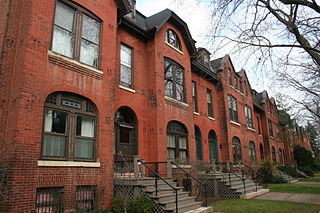
The McCormick Row House District is a group of houses located in the Lincoln Park community area in Chicago, Illinois, USA. It sits between East and West parts of DePaul University's Lincoln Park Campus and is independent from the school. They were built between 1884 and 1889 and used by the McCormick Theological Seminary to gain rental income. They were designed in the Queen Anne Style by the A. M. F. Colton and Son architects and joined the list of Chicago Landmarks May 4, 1971. The McCormick Row House District also lies within the boundaries of the Sheffield Historic District.
The Wingent House is a nineteenth-century farmhouse located at 6231 North Canfield Avenue in Chicago, Illinois. One of the oldest surviving farmhouses within the Chicago city limits, the building received Chicago Landmark status on July 31, 1990. It is part of the Norwood Park neighborhood.
The Beverly/Morgan Railroad District is a historic district in the Beverly, Morgan Park, and Washington Heights community areas of Chicago, Illinois, United States. It was designated a Chicago Landmark on April 15, 1995.
The Jackson Park Highlands District is a historic district in the South Shore community area of Chicago, Illinois, United States. The district was built in 1905 by various architects. It was designated a Chicago Landmark on October 25, 1989. It is often regarded as one of three South Side upper-middle to upper-class neighborhoods, the other two being Hyde Park / Kenwood to the direct north and the sister communities of Beverly / Morgan Park, on the far southwest side.
The Longwood Drive District is a historic district in Chicago, Illinois. The houses along Longwood Drive in the Beverly neighborhood were built beginning in 1873 by various architects. Longwood was named for a long copse of trees that ran along the lee side of the hill where the rest of Beverly is located. The area was designated a Chicago Landmark on November 13, 1981. The Longwood Drive has a mixture of different styles of architecture, such as Italianate, Carpenter Gothic, Queen Anne, Shingle, Prairie School, and Renaissance Revival.
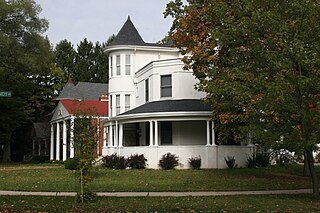
Old Edgebrook is a historic district and neighborhood in the Forest Glen community area of Chicago, Illinois, United States.
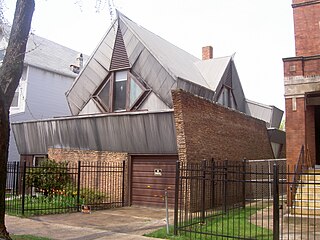
The Bachman House is a house in Chicago, Illinois, United States. It is located at 1244 W. Carmen Ave. The house was built between 1947 and 1948 by Bruce Goff. Architect Bruce Goff created a neighborhood sensation in 1948, when he remodeled a modest wood house into the home and studio for recording engineer Myron Bachman. The window openings were changed and an exterior cladding of brick and corrugated aluminum was added. It remains a local attraction, as well as a nationally recognized example of work by one of architecture's most unusual figures. Much of Goff's architectural career was spent in Oklahoma, although he maintained a practice in Chicago from 1934 to 1942. Goff also designed the Turzak House, another Chicago Landmark. Bachman House was designated a Chicago Landmark on December 9, 1992.

The Beeson House and Coach House is a Queen Anne style house located at 5801 West Midway Park in Chicago, Illinois, United States. The house was built in 1892 by Fredrick R. Schock for Fredrick Beeson. It was designated a Chicago Landmark on January 20, 1999.
The DuPont–Whitehouse House is an Italianate-style house located at 3558 South Artesian Avenue in the McKinley Park neighborhood of Chicago, Illinois, United States. The house was built between 1875 and 1876 by Oscar Cobb & Co. It was designated a Chicago Landmark on April 16, 1996.
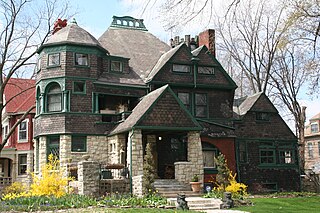
The F. R. Schock House is a Queen Anne style house at 5804 West Midway Park in Chicago, Illinois, United States. The house was built in 1886 by Fredrick R. Schock for himself. It was designated a Chicago Landmark on January 20, 1999.
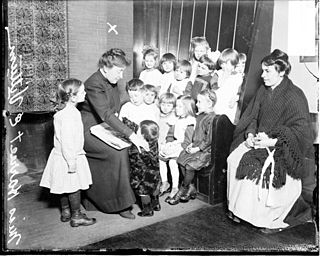
The Northwestern University Settlement House is an Arts and Crafts style house located at 1400 West Augusta Boulevard in Chicago, Illinois, United States. The Settlement Association was founded in 1891 by Northwestern University to provide resources to the poor and new immigrants to the West Town neighborhood. The actual Settlement House structure was built in 1901 by Pond & Pond. It was designated a Chicago Landmark on December 1, 1993.
The Raber House is an Italianate style house located at 5760 South Lafayette Avenue in the Washington Park neighborhood of Chicago, Illinois, United States. The house was built in 1870 by Thomas Wing. It was designated a Chicago Landmark on April 16, 1996.

The Turzak House is a house located at 7059 North Olcott Avenue in Chicago, Illinois, United States. The house was built between 1938 and 1939 by Bruce Goff for Charles Turzak. It was designated a Chicago Landmark on December 9, 1992.

Abraham Lincoln: The Man is a larger-than-life size bronze statue of Abraham Lincoln, the 16th president of the United States. The original statue is in Lincoln Park in Chicago, and several replicas have been installed in other places around the world. Completed by Augustus Saint-Gaudens in 1887, it has been described as the most important sculpture of Lincoln from the 19th century. At the time, the New York Evening Post called it "the most important achievement American sculpture has yet produced." Abraham Lincoln II, Lincoln's only grandson, was present, among a crowd of 10,000, at the unveiling. The artist later created the Seated Lincoln sculpture in Chicago's Grant Park.

The Statue of The Republic is a 24-foot-high (7.3 m) gilded bronze sculpture in Jackson Park, Chicago, Illinois. It is a smaller-scale replica constructed in 1918 to commemorate the 25th anniversary of the World's Columbian Exposition in Chicago, where the original statue was, and commemorates the Illinois statehood centennial. The statue was funded by the Benjamin Ferguson Fund, which commissioned Daniel Chester French, the sculptor of the original 65-foot-tall (20 m) statue that stood on the grounds of the World's Columbian Exposition of 1893, to sculpt this replica. Edith Minturn Stokes served as French's model for the original statue. Henry Bacon, the architect of the Lincoln Memorial, designed the festooned pedestal for the replica statue.
Touhy Avenue is a major street throughout northern Chicago, Illinois as well as the north and northwestern suburbs of the city. It is named for Patrick L. Touhy, a subdivider who was also the son-in-law of Phillip Rogers, an early settler who helped develop Rogers Park. Points of interest along Touhy Avenue include Loyola Park, the Winston Towers, the Lincolnwood Town Center, Lincolnwood Produce & Grocery, Loeber Motors, Hebrew Theological College, Village Crossing Shopping Center, the Shure Headquarters Building, the Leaning Tower YMCA, the Pickwick Theatre, and the northern end of O'Hare International Airport.
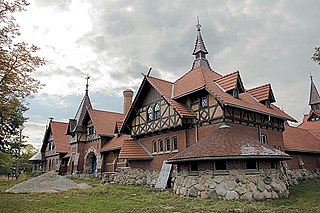
The National Museum of Puerto Rican Arts and Culture is a museum in Chicago dedicated to interpreting the arts and culture of the Puerto Rican people and of the Puerto Ricans in Chicago. Founded in 2001, it is housed in the historic landmark Humboldt Park stables and receptory, near the Paseo Boricua. It hosts visual arts exhibitions, community education, and festivals. Its exhibitions have featured the artwork of Osvaldo Budet, Elizam Escobar, Antonio Martorell, Ramon Frade Leon, and Lizette Cruz, in addition to local Chicago or Puerto Rican artists. The Institute also sponsors music events including an annual Navi-Jazz performance, described as a "fusion of Puerto Rican and African American musical elements."













